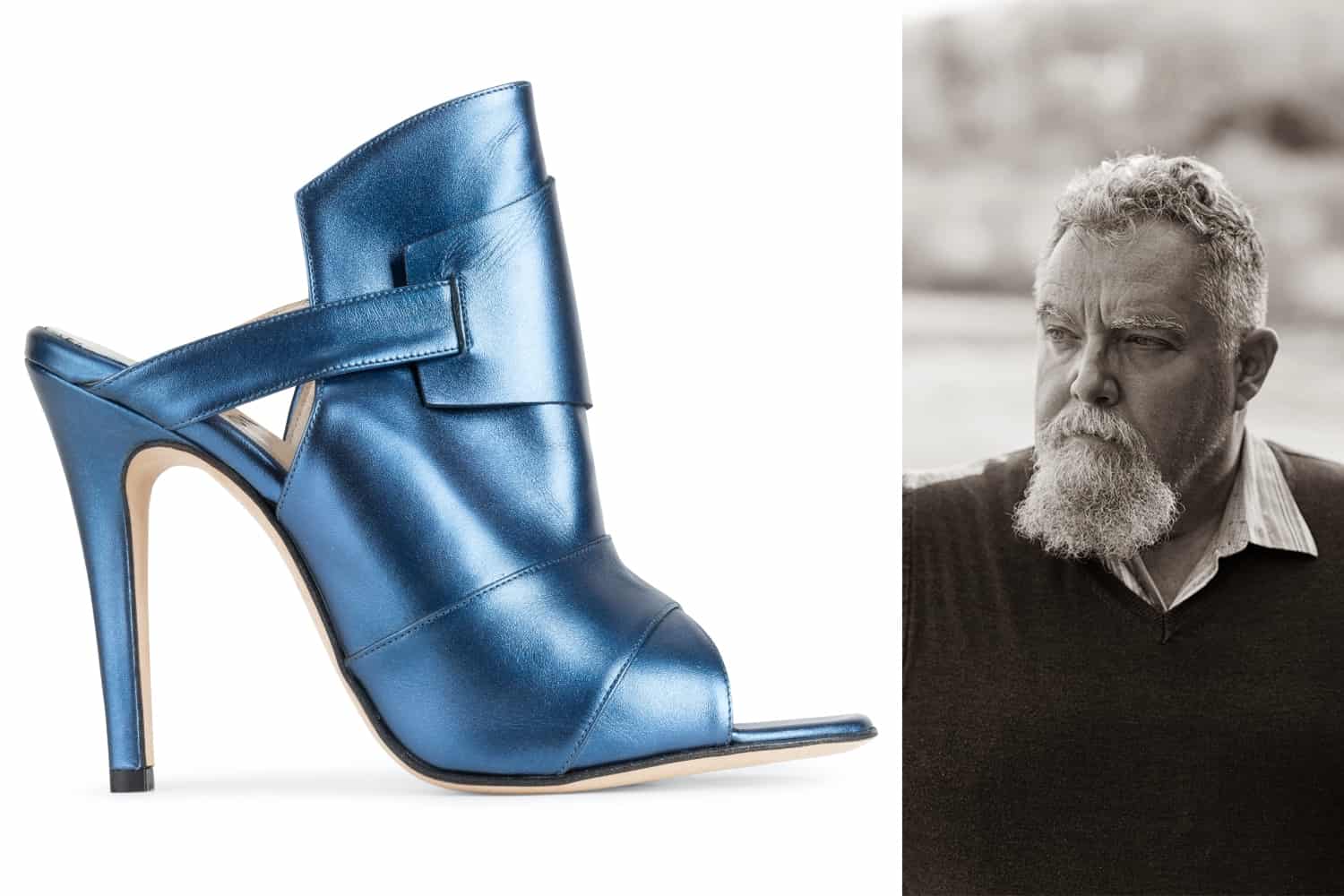
96
Here’s an inspiring story if there ever was one…Chris Donovan has had a lifetime passion for shoes, but never really knew how to turn that love into a career. After spending most of his life in blue collar jobs, his partner finally convinced him to pursue his dream and design shoes. He tells The Daily how he went from repairing phones to a career in luxury footwear.
Hi Chris, How are you?
I’m doing great! I just found out recently that I’m a finalist for the Rising Star award at FGI.
Congratulations! How does that feel?
My God, it’s very affirming. It’s funny when you come from a place like I did. My whole history before this, and then trying something new, and then getting to the point where, wow, I’m pretty good! It’s very exciting. I’m very happy about it. You can’t do it alone.
You have such an interesting background. Tell us what you were doing before designing shoes.
I was a telephone repairman about 25 years, and before that, I had a stint of being a bartender for eight years. And that whole time, I was always sketching shoes.
Where were you a bartender and what was your least favorite drink to make?
A mudslide, because when you work in a fast bar, it’s really sticky. I worked at a big club. There was one in Boston called The Metro. I was bartending there at night. It was the busiest bar in town, so it was a lot of fun. I actually got to be fashionable.
How did you telephone repair job come about?
When I left high school, I went into college at Assumption College in Worcester, MA. I was majoring in religious studies, and I ran out of money. Then I realized that the phone company did tuition reimbursement. I started out as a telephone operator—worst job in the world—and from there I moved up to phone repairs. But once I got into it, I kind of just
got really comfortable with it. The money was good, and they paid for my education, so I finished my degree.
Why was telephone operating the worst job in the world?
Being brand new, I was basically stuck in the night shift. 11PM to 7AM. This was before 9/11. We had emergency calls and drunk people. During the daytime, it was just business people and nighttime was a completely different group. It was really stressful.
How did you find the time to sketch shoes when you were doing repairs?
I had a bunch of different offices that I would travel to between repair, so when I was at my desk, I always had a sheet of paper out and I was drawing on my break or on my lunch hour. I have a drawer full of shoe sketches from that time. Any time I was on a conference call, to make the time go by, I would sit there and draw pages full of shoes.
What is it about shoes that you are so drawn to?
When I was in high school—the first time I even noticed shoes was in the 1970s—a girl walked in and she had the highest pair of platforms I’d ever seen. At first, I was like, ‘How in the world can you walk in those?!’ And I suddenly realized it’s a piece of sculpture. It’s a piece of art. I started sketching in my notebooks. Then thoughts started running through my mind. ‘How much of the sole has to touch the floor? How much of the foot has to be encased in the shoe?’ It just kept going!
How did you transition from the phone company to designing shoes?
When I was in the phone company, I met my now-husband, Steve. He was a pole climber…romantic! He noticed right from the start that when we were at dinner or places like that that I’d be drawing shoes on the back of my napkin. He said ‘You seem to be obsessed with it, I think you should do something with it.’ And I was like, ‘What?! How do you even become a fashion designer?’ Over the years, he kept on prodding me, and then at one point I started taking courses at RISD [Rhode Island School of Design]. They didn’t have anything in fashion, but I figured color theory was a way to get me involved. Then I got diagnosed with cancer, which was detected very early and was cured. So I needed to find out how to do this. I found a course in New York that was over two days. A professor from Europe came over to teach it, whose name was Aki Choklat.
How did it go?
He would be the first person in fashion that ever saw my shoes and I was really nervous. I brought some sketches, and the whole first day was exercises in sketching, and it was rapid fire. We had 15 seconds to do a shoe, and he would challenge us through the whole day just through sketching. And by the end of the day, he came over to me and he said, ‘You were born to do this.’ [Begins tearing up.] Sorry! He said, ‘You have to go to Europe to do a Masters.’ I’m like, ‘Europe?!!’ It felt great that he loved my stuff, but I had no idea how to pull that off.
What did you do next?
I called Steve and told him [the professor] loves my stuff. He asked me what he suggested I do. I told him he wants me to go to Europe for a Masters degree. The first thing Steve said to me was, ‘We’ll sell the house if we have to.’ He was totally willing to do that. We didn’t get the kitchen we wanted, but we didn’t have to. I ended up leaving the phone company and got accept to Polimoda [the fashion school] in Florence and spent a year over there getting my Masters. I graduated at the top of my class, too.
Of course you did!
I don’t mean to brag….or do I! I do mean to brag!
Chris Donovan
What was the experience like being in school?
It’s quite complicated. I was going to Italy for the first time and I didn’t know the language. The school had a universal program, so they taught in English. For the first three months, I was really just leaning the basics. One of the big moments that turned everything around was when I was sketching something, and the teacher came over to me, and she looked at me, and she says, ‘God that’s awful!’ And I said, ‘I don’t know what to tell you.’ She said, ‘You’re trying to be fashion?’ She looked around at the 20-years-olds in the room and said they are fashion students. She asked me, ‘What were you?’ I told her I was a repairman. She said I should ‘Do me.’ I didn’t take offense to it—she meant don’t forget where I came from. As soon as she told me that, everything changed. My designs changed. I started being myself and then they started to fall in love with what I was doing. It focused me on where I needed to go with it.
Your peers were kids in their twenties. Were you like Rodney Dangerfield in the movie Back to School?
They all thought I was a janitor.
That’s funny.
They would come up to me and tell me, ‘There’s a mess in there, can you clean up the spill?’ And I was like no, no, I can’t. I was the oldest student they ever had.
What was your plan after Italy?
Come back home [to America] and find a job here. I wasn’t exactly sure how to do that. I went to my mentor over in Italy, and said we’re almost over with school, ‘Where do I go from here? Where should I approach people for a job?’ He was really honest and said no one’s gonna hire me. He said I was too old. It was a kick in the head. He told me to go home, make prototypes of my own shoes and share my story. I started in the basement and had a blast. I made all sorts of shoes. I saw a contest on Project Runway to meet Tim Gunn and have him critique my work. I thought I’d love get my work critiqued by him, or anybody there, because criticism is so important. They were actually looking for fashion designers, but I had nothing to lose so I sent my shoe portfolio. When the contest ended, they called me and said I was one of three finalists. I ended up winning it. They brought Steve and I to New York and did a whole thing on the shoes. Then AARP did a little documentary on me and it started going viral. That’s when we started thinking about going to a factory.
How old were you at this this point?
I was 59.
Wow! How do you describe your aesthetic to people?
One of the things that always stuck with me when I was in school was that the directors would tell me my designs are really powerful. It really resonated with me because that’s kind of the way I want women to feel. I want them to feel powerful and I want the designs to feel that way. I’ve always borrowed from the things around me. I don’t usually find conventional beauty that interesting or that fascinating. But I’m inspired by a lot of things—like a mass of wires that were intertwined that I used to work with or the things that you do with fiber optics. Fiber optic conduits make an amazing heel! There were all these ideas that I was getting from that, which I bring into my designs now. I take woodworking, any craft I can think of, I will use to design shoes. My aesthetic is kind of blue collar influence.
What’s your vision for the brand?
I would love to see the brand grow and get into all the major big-box stores, and within the next few years, become a multi-million dollar brand. I see no reason to limit us. This is a blast! I have books and books here, binders of future collections. I would love to put a large collection out every year. I’m backed up with designs in my head. They’re there, and I wanna share them and get them out there.
What do you think the lesson of your story is? Is it about finding your life’s work a little bit later in life?
You can have many stories. You don’t have to have one. Don’t believe the rules; all these stupid rules that society gives you. Well-meaning people will tell you all sorts of things. Be careful who you listen to. Do what you need to do. Follow your passions, because what else are you gonna do? I mean, if you get to be my age, am I going to sit around? This is a passion I’ve had all my life. Let’s have some fun with this and go as far as I can with it. I’ve learned to surround myself with supportive people. I don’t listen to anybody who is toxic or saying, ‘No you can’t do this, you can’t do that.’ Try everything. Even if I didn’t make this a success, I did it. I mean, you’ve just got to face those fears. I don’t know what’s gonna happen in the future, but I can’t wait to see!
Subscribe to our newsletter and follow us on Facebook and Instagram to stay up to date on all the latest fashion news and juicy industry gossip. Go to fashionweekdaily.com for more fashion news updates.
You can view the original article HERE.



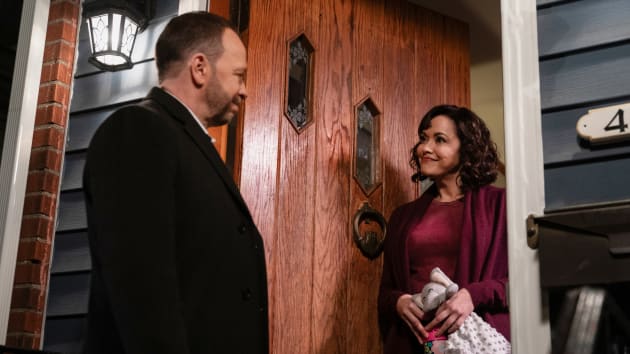

:quality(85):upscale()/2024/04/19/812/n/1922398/dac564326622b846c15299.26306818_.jpg)
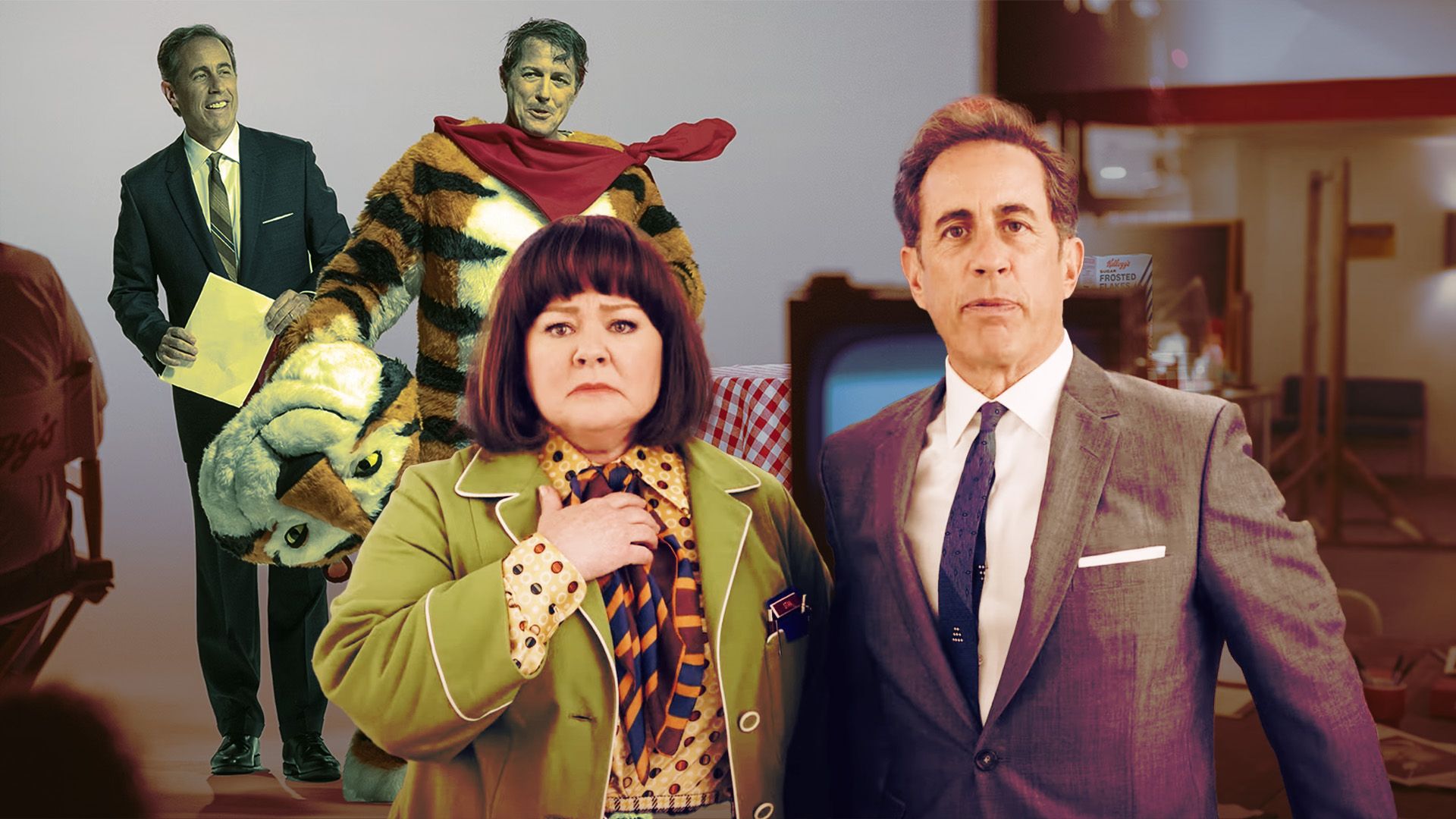




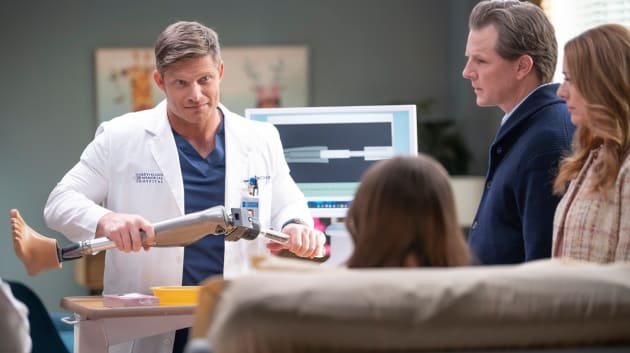

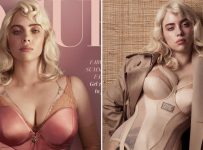
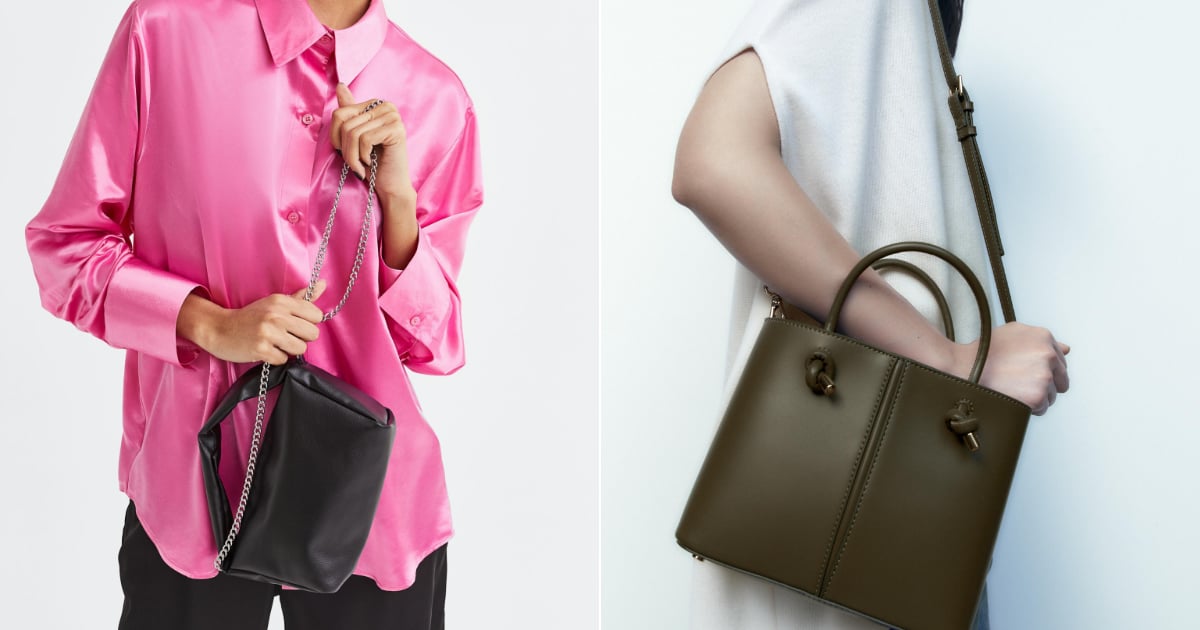



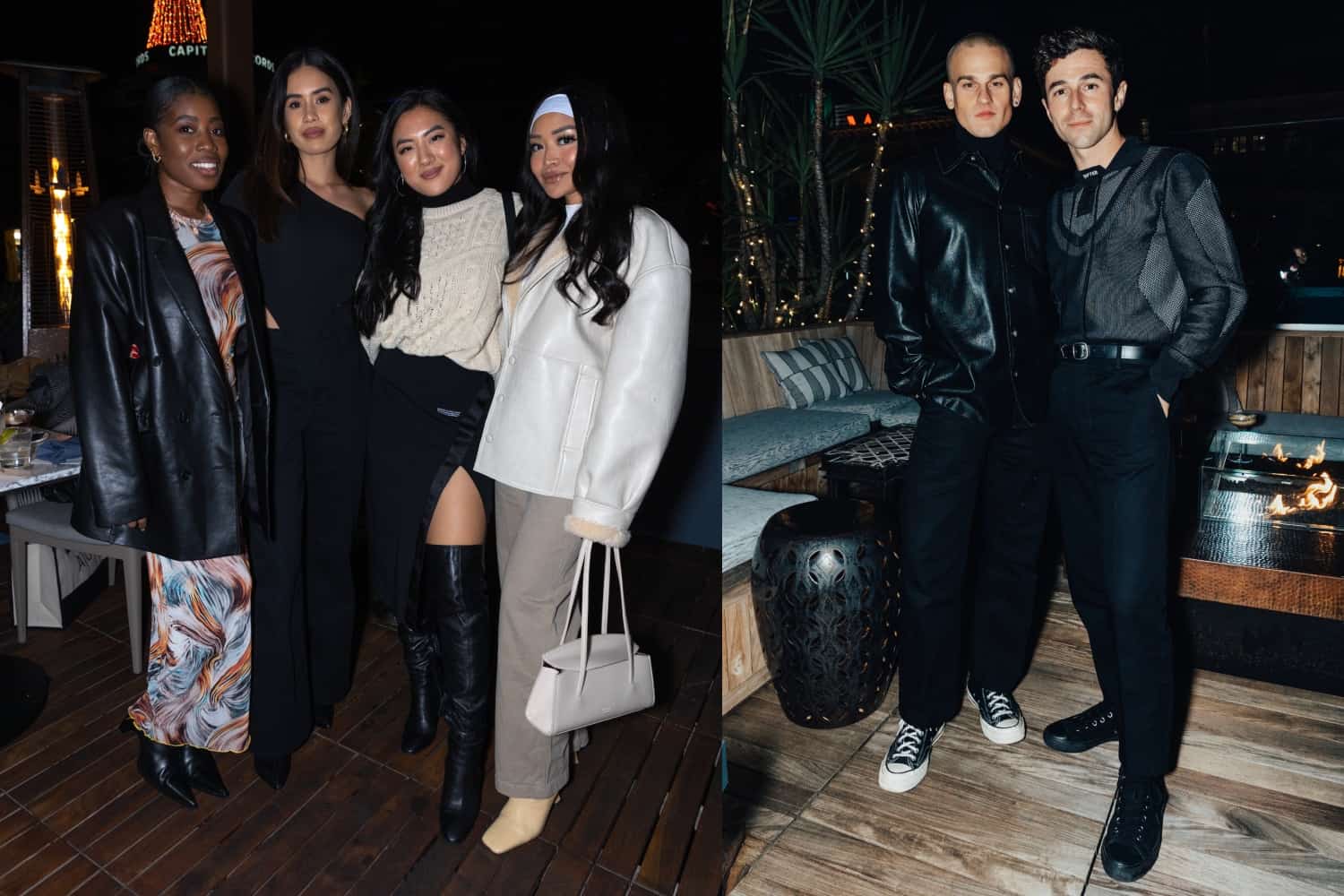
:quality(85):upscale()/2024/05/01/868/n/1922283/a63ed21666329ce79de023.96393449_.jpg)





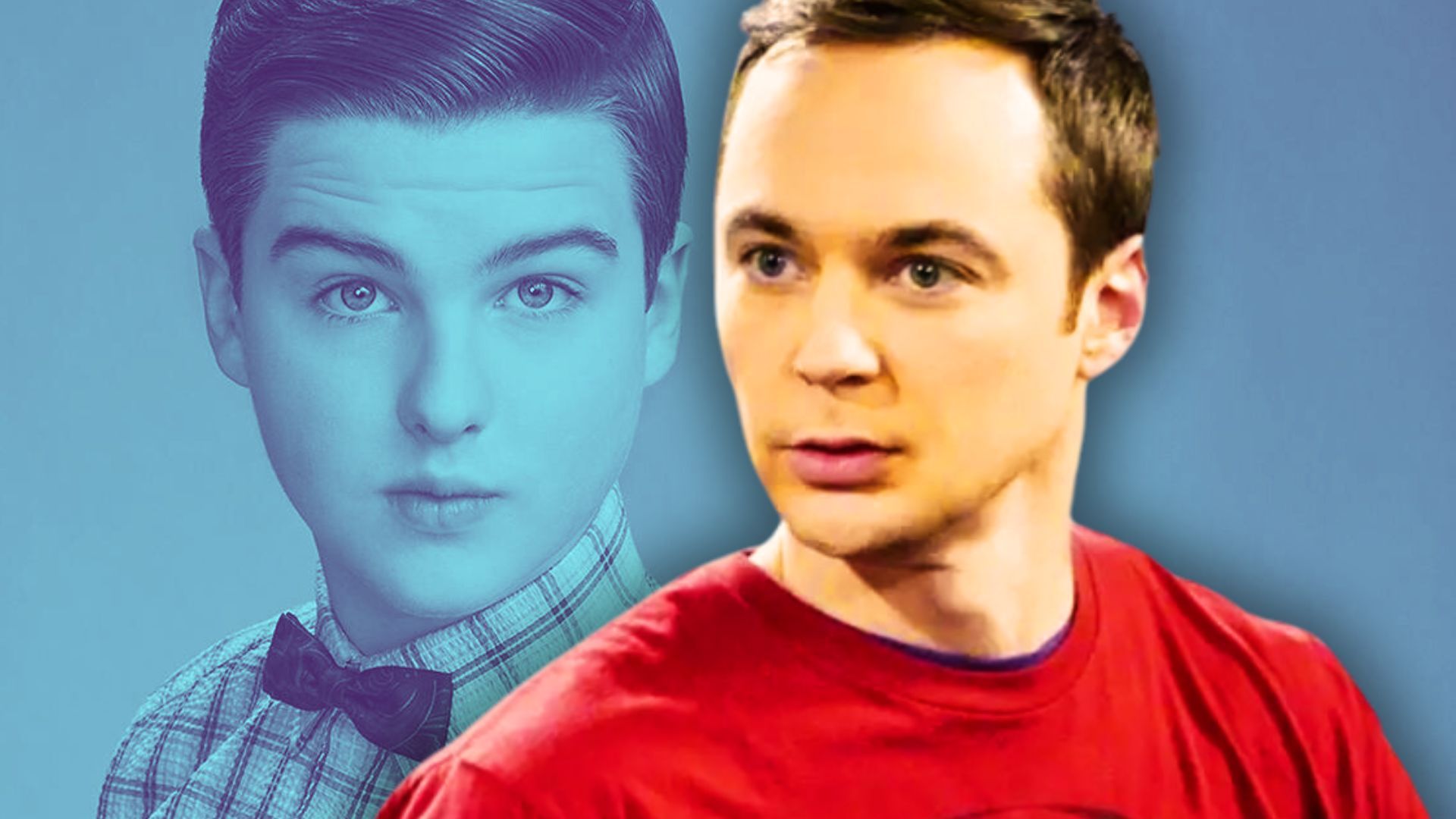

:quality(85):upscale()/2024/05/03/637/n/1922564/a9276ca86634f23c02e464.89757585_.jpg)

:quality(85):upscale()/2024/04/30/935/n/1922564/02f9990566316200eedab6.59700408_.jpg)